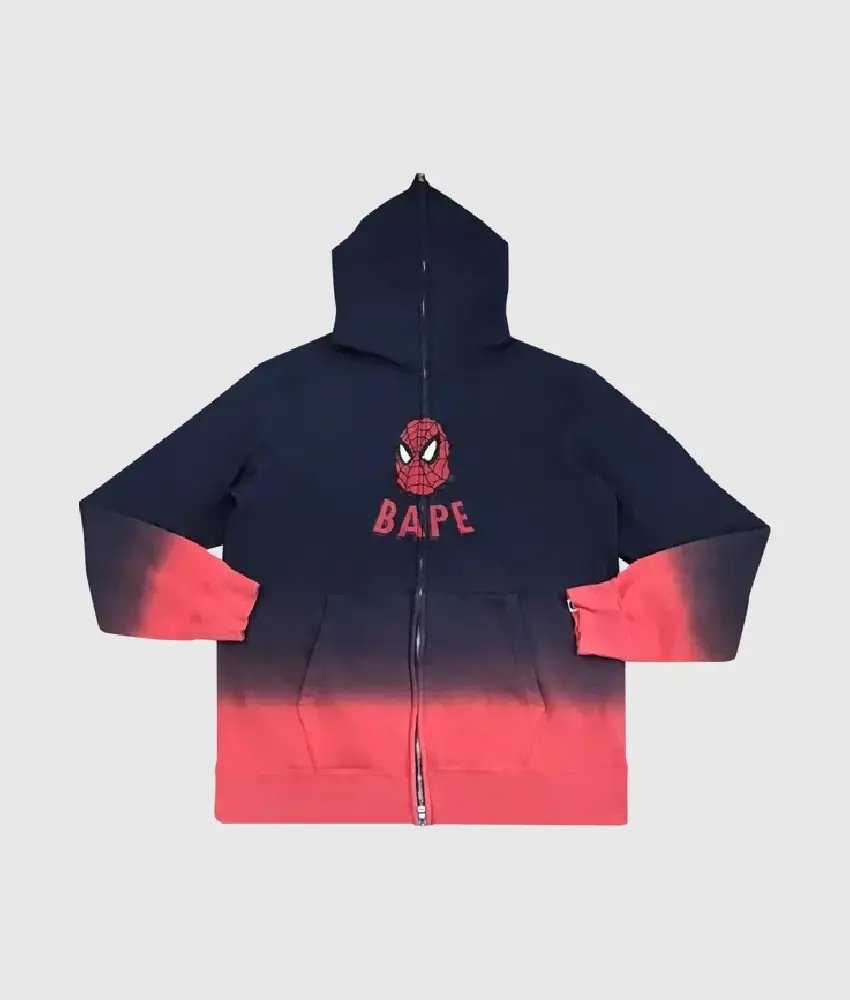In this in-depth article, we explore the history, influence, and signature styles of Comme des Garçons, a label that has shaped the world of fashion in profound ways.
Table of Contents
ToggleThe Origins of Comme des Garçons
Comme des Garçons was founded in 1969 by the iconic Rei Kawakubo in Tokyo, Japan. At the time, the fashion world was dominated by traditional European houses and structured designs, but Kawakubo had a different vision. Drawing inspiration from Japanese culture, minimalism, and deconstruction, she set out to create garments that rejected conventional beauty standards. Her goal was to produce clothing that was not just aesthetically different but intellectually challenging.
The name Comme des Garçons, which translates from French to “Like Boys,” reflects Kawakubo’s approach to fashion: a rejection of typical gender norms and an embrace of androgyny. The brand debuted in Paris in 1981, where it immediately stirred the fashion world with its all-black collection, featuring oversized shapes, asymmetry, and raw hems—elements that were stark contrasts to the polished elegance of Parisian fashion at the time.
The Philosophy Behind Comme des Garçons
At the heart of Comme des Garçons is a commitment to breaking the rules of traditional fashion. Rei Kawakubo has famously said that she creates clothing “for people who are not swallowed by culture, who are independent and intelligent.” This ethos has guided the brand for over five decades, as it continues to experiment with form, fabric, and structure in ways that few other designers dare.
The brand’s collections are often seen as statements rather than just clothing. Kawakubo’s designs frequently explore themes of imperfection, duality, and dysfunction, blurring the line between fashion and art. The garments are often seen as abstract, conceptual pieces rather than items designed solely for wearability. This avant-garde approach has earned the brand critical acclaim and a cult following among fashion insiders and intellectuals alike.
Key Characteristics of Comme des Garçons’ Aesthetic
1. Deconstruction and Reconstruction
One of the defining elements of Comme des Garçons is its use of deconstruction, a technique where garments are taken apart and reassembled in unconventional ways. This often results in asymmetrical shapes, unfinished hems, and garments that appear to be incomplete or in a state of flux. Kawakubo has mastered the art of making clothing that feels raw and undone, yet carefully crafted and intellectually rich.
The idea of deconstruction speaks to the brand’s philosophy of challenging norms—rejecting the idea that clothing has to be perfect or pristine to be beautiful.
2. Oversized Silhouettes and Unconventional Shapes
Comme des Garçons often plays with proportions and silhouettes in ways that break the mold of traditional tailoring. Rather than body-hugging fits, the brand frequently offers oversized, voluminous pieces that create abstract shapes around the body. This use of exaggerated forms is a rejection of mainstream fashion’s obsession with form-fitting garments and allows the wearer to express themselves in a more fluid and non-conformist way.
One notable collection is the Spring/Summer 1997 “Body Meets Dress, Dress Meets Body”, where Kawakubo introduced garments that added bulges and exaggerated curves to the human form. These pieces, often referred to as the “lumps and bumps” collection, blurred the line between fashion and sculpture.
3. Androgyny and Gender Fluidity
From the beginning, Comme des Garçons has been committed to androgyny and gender fluidity. The brand’s collections are often designed to be worn by both men and women, with many pieces defying traditional gender categorization. Kawakubo believes that fashion should not be restricted by gender norms, and her collections consistently challenge the idea of what is “masculine” or “feminine.”
In many ways, Comme des Garçons helped pave the way for the gender-neutral clothing movement, which has gained significant traction in the fashion industry in recent years.
4. Avant-Garde Fabrics and Textures
Another hallmark of Comme des Garçons is the brand’s use of experimental fabrics and textures. Whether it’s incorporating metallics, rubberized textiles, or unconventional materials like paper and plastic, the brand is always pushing the envelope in terms of what fashion can be made of. This approach not only gives the clothing a futuristic feel but also adds a tactile dimension to the garments.
Each collection offers a new exploration of textures, ranging from soft, flowing fabrics to rigid, sculptural materials. This diversity in fabric choices reflects Kawakubo’s desire to continually innovate and redefine fashion.
The Influence of Comme des Garçons on Modern Fashion
1. Revolutionizing Streetwear
Although Comme des Garçons is often associated with high-fashion, it has had a profound influence on the streetwear scene as well. The brand’s nonconformist, rebellious spirit has inspired countless streetwear designers who have adopted elements like oversized fits, graphic prints, and deconstructed aesthetics in their own collections.
In particular, Comme des Garçons PLAY, a more casual and approachable sub-label, has become a streetwear staple. Known for its iconic heart logo, created by Polish artist Filip Pagowski, the PLAY line features minimalist designs with a playful edge. Comme des Garçons PLAY t-shirts and sneakers have become must-have items in the streetwear community, blending high-fashion with everyday wearability.
2. Collaborations with Global Brands
Another way Comme des Garçons has cemented its influence in modern fashion is through its numerous collaborations with global brands. Over the years, Kawakubo has worked with companies ranging from Nike to Converse, and most notably, Supreme. These collaborations have brought Comme des Garçons to a broader audience, blending the brand’s avant-garde sensibilities with the mass appeal of iconic streetwear and sportswear labels.
These collaborations have resulted in some of the most sought-after pieces in the fashion world, often selling out within minutes of release.
3. Pioneering Fashion as Art
Few designers have blurred the line between fashion and art as successfully as Rei Kawakubo. Her work has been the subject of major exhibitions, including a retrospective at the Metropolitan Museum of Art in 2017 titled “Rei Kawakubo/Comme des Garçons: Art of the In-Between.” The exhibit was a celebration of Kawakubo’s avant-garde approach to design, positioning her as one of the most important living fashion designers.
By elevating fashion to the level of art, Comme des Garçons has influenced a generation of designers who view clothing as more than just a commercial product, but as a medium for self-expression and artistic experimentation.
Comme des Garçons Sub-Labels
1. Comme des Garçons Homme
Launched in 1978, Comme des Garçons Homme is the brand’s menswear line. It focuses on more wearable, yet still experimental, pieces designed for everyday use. The line offers a more understated take on the avant-garde aesthetics that Kawakubo is known for, featuring tailored jackets, trousers, and shirts that play with subtle deconstruction and unusual proportions.
2. Comme des Garçons Noir
Comme des Garçons Noir was launched in 1987 as a way to explore the color black more deeply. This sub-label focuses exclusively on black garments, emphasizing the brand’s minimalist, monochromatic aesthetic. The pieces in this line tend to have a more mysterious and somber tone, reflecting Kawakubo’s fascination with darkness and simplicity.
3. Comme des Garçons PLAY
As mentioned earlier, Comme des Garçons PLAY is the most accessible of the brand’s sub-labels. It offers more casual and playful pieces, from graphic t-shirts to sneakers, often featuring the brand’s signature heart logo. While less experimental than the mainline collections, PLAY has become a global phenomenon and remains one of the most recognizable sub-brands in fashion today.
The Lasting Legacy of Comme des Garçons
In a fashion world that often gravitates toward trends, Comme des Garçons stands as a beacon of individuality and nonconformity. Over its five-decade history, the brand has remained true to its core philosophy of challenging conventional notions of beauty and fashion. Rei Kawakubo continues to push boundaries with each collection, ensuring that Comme des Garçons will always be a label for those who dare to be different.














